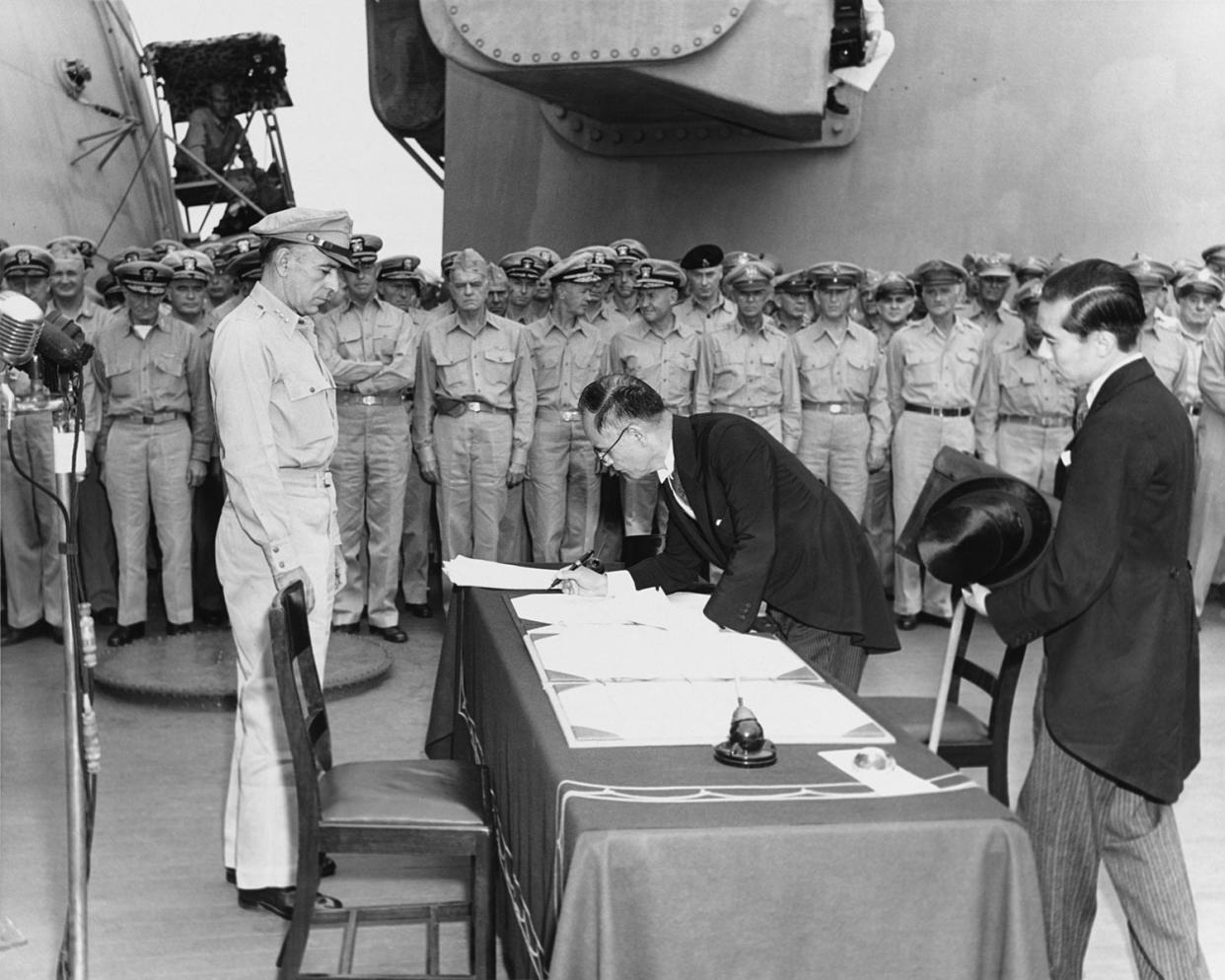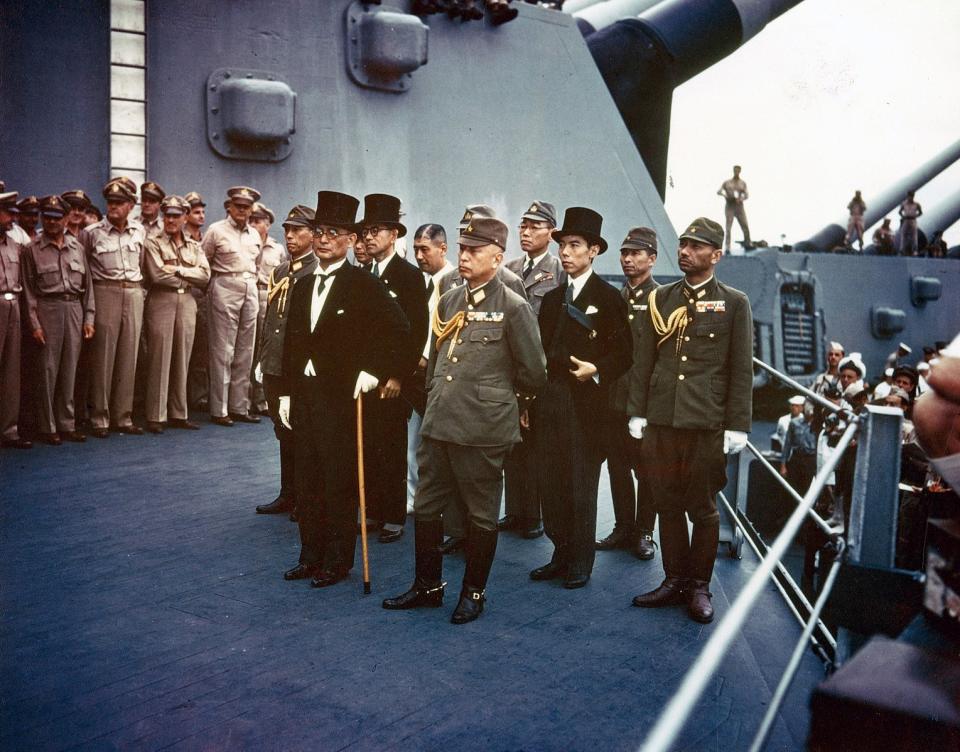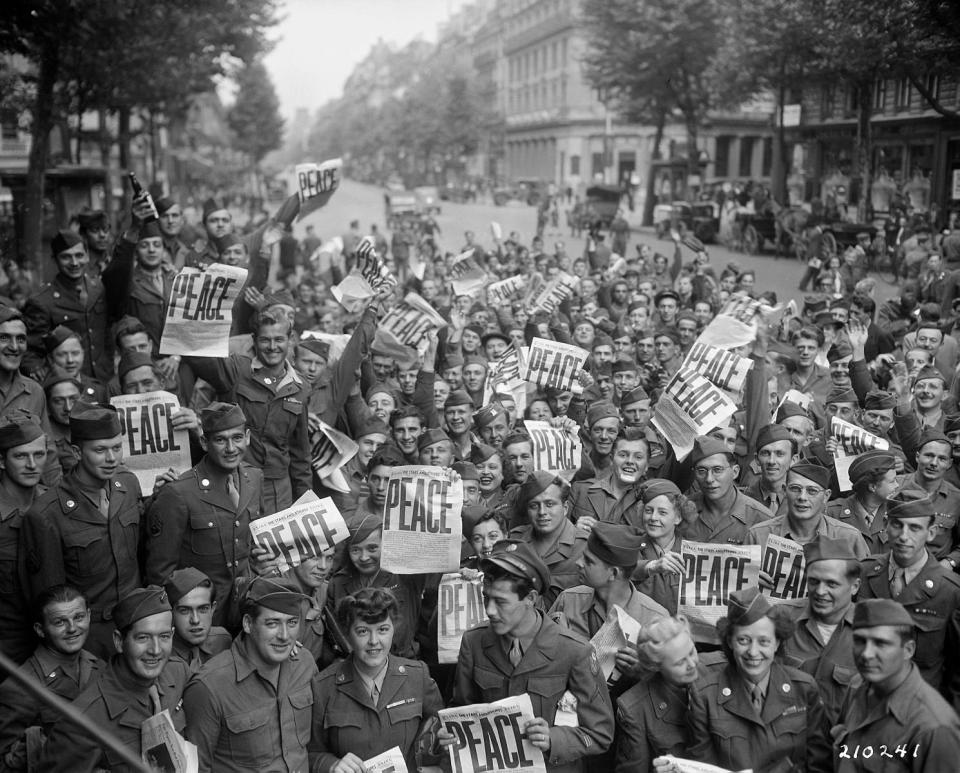Why the US made Japan surrender on the deck of a massive battleship

- Oops!Something went wrong.Please try again later.
On August 14, 1945, Americans received the news that Japanese Emperor Hirohito announced his country’s surrender. By August 30, Gen. Douglas MacArthur was in Tokyo, and the American occupation of Japan had begun. On the morning of Sunday, Sept. 2, 1945, a small delegation of Japanese officials boarded the massive battleship USS Missouri to formally sign the instrument of surrender.
The descriptions of the two sides at the official surrender ceremony are important. Looking at photographs of the event, the Japanese appear incredibly small in comparison to the massive American and Allied officers, their ships, and their crews. It was probably a humbling spectacle for the Japanese, and in all likelihood, it was meant to be.
There were many opportunities to sign a formal surrender elsewhere. Emperor Hirohito announced Japan’s surrender to the Imperial Japanese military on August 17, and two days later, representatives of Japan met with MacArthur in the Philippine capital of Manila to discuss the general’s plans for the occupation of the country. The document might have been signed there.

Within days, MacArthur was on his way to Tokyo and Marines were landing on the Japanese home islands for occupation duty. Still, many preparations were made for the formal surrender aboard the Missouri, including color filming of the event and meticulous seating arrangements. The United States even had a special flag flown in for the ceremony, the same flag used by Commodore Matthew Perry when he forcibly opened Japan to trade in 1853.
Since a naval vessel is considered sovereign territory, forcing the Japanese to sail through a fleet of other nations’ ships in the middle of their own capital city as thousands of enemy sailors looked on was itself a message: Japan had been defeated and there was no getting around it. Furthermore, as customs might have dictated, none of the Japanese representatives were saluted when they came aboard.
Japanese culture is centered around “saving face,” the outward appearance of respect. Everything involved in the formal surrender ceremony, from the size of the desk to the differences between the two copies of the surrender documents – the Allies, leatherbound, the Japanese, bound in canvas – was meant to humiliate the Japanese government and military in front of the Japanese people.
Upon arriving in Tokyo, MacArthur was firm but even-handed. He forbade Allied personnel from eating the Japanese food, because it was in short supply due to Allied war efforts (a famine would occur the next year). He also forbade anyone from flying the Japanese “rising sun” flag. Shortly after the formal signing ceremony, he initiated investigations into Japanese war crimes.

MacArthur’s immediate post-signing concerns included what to do with Hirohito himself. Some in the US government believed that Japanese militarism would only die if Hirohito were forced to abdicate. Others believe Hirohito’s continued rule was essential to the Japanese surrender. Moreover, many in Japan believed American intentions were to wipe out Japanese culture, and that Hirohito’s removal was part of that cleansing.
MacArthur and the U.S. Army command had the perfect answer to this tightrope of diplomacy that could reignite the war. The Army made the emperor subordinate to the occupation commander.
MacArthur, either implicitly or unaware, protected the royal family from war crimes tribunals. His plan was to use the emperor as a wedge in the minds of Japanese people: the emperor had been betrayed by the military and now the emperor was going to lead the people out of the horrible aftermath – for better or for worse.

